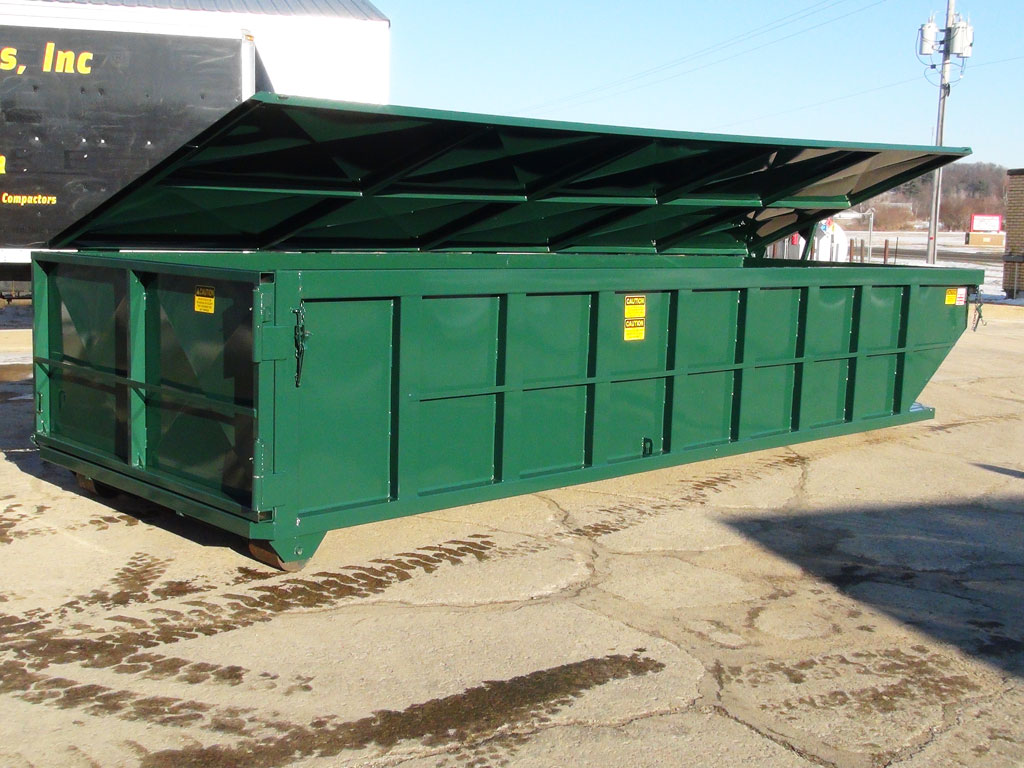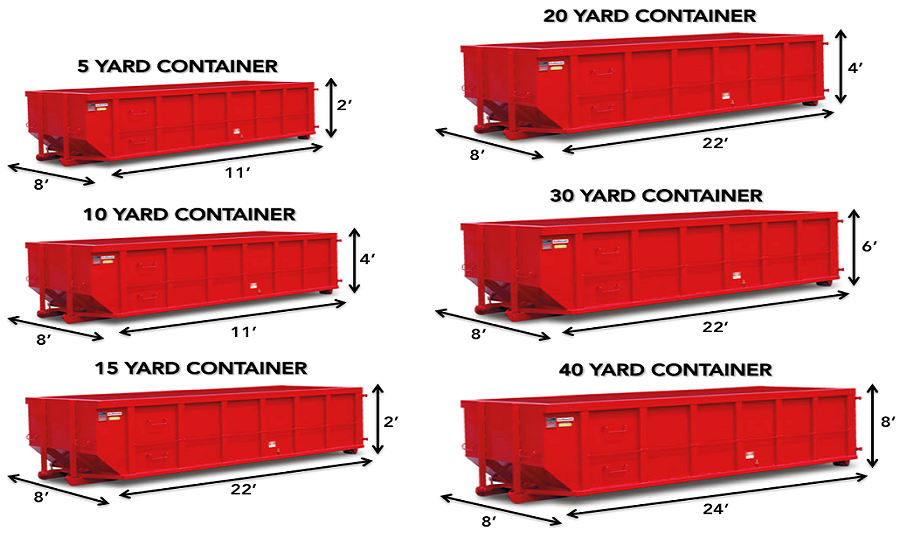Accurate evaluation of waste volume is important in figuring out the appropriate dumpster rental size, as it straight impacts the effectiveness and cost-effectiveness of your waste disposal process Consider the kind and quantity of products, project period, and aspects like weight, density, and empty space in the dumpster. Common dumpster dimensions range from 10 to 40 backyards, with each fit for specific job kinds. By reviewing your waste output, area constraints, weight capacity, and particles type, you can choose the appropriate dimension to optimize waste disposal and reduce expenses. Remain to fine-tune your calculation for a perfect fit.
Determining Your Waste Quantity Needs
A substantial section of the dumpster rental process involves accurately identifying your waste quantity needs, as this directly impacts the dimension of the dumpster you'll require.
To make a notified decision, it's essential to estimate the amount of waste your job will certainly create. Think about the kind and amount of materials you'll be dealing with, such as https://telegra.ph/Dumpster-Rentals-Made-Easy-in-10-Actions-02-06 construction debris, household garbage, or yard waste. Additionally, think about the duration of your project and exactly how often the dumpster will certainly need to be emptied.
When calculating your waste volume, take into consideration the following variables: the weight and thickness of the products, the dimension of the things being gotten rid of, and the empty space within the dumpster.
It's likewise vital to represent any type of unexpected waste that may arise during the job. By taking the time to precisely approximate your waste volume requires, you'll be able to pick the right dumpster size for your project, making sure efficient waste removal and lessening the threat of pricey overflows or insufficient capacity.
Understanding Dumpster Dimension Options
Several dumpster dimension options are offered to fit numerous task requirements, varying from small, small dumpsters to large, industrial-sized containers This selection ensures that you can find the best fit for your certain needs, whether you're taking on a minor restoration or a huge building and construction project.
Dumpster dimensions are typically measured in cubic yards, with common dimensions including 10, 15, 20, 30, and 40-yard dumpsters. A 10-yard dumpster, for instance, is suitable for small-scale tasks such as shower room remodels or small cleanouts, holding roughly 3-4 pickup tons of debris.
On the various other hand, a 40-yard dumpster is better fit for large projects like business building and construction or major demolition work, holding around 12-16 pickup truck loads of waste.
Understanding the various dumpster dimension choices is necessary to guaranteeing you have the best devices for your task. By selecting the proper dimension, you can enhance waste disposal efficiency, lower expenses, and minimize environmental impact.
Factors Affecting Dumpster Rental Size
Determining the ideal dumpster rental size for a project entails more than just reflecting on the physical space available; it additionally needs evaluating different elements that affect waste generation and disposal.
One important aspect is the type of waste being generated. For example, construction tasks typically create heavy, thick materials like concrete and asphalt, which call for larger dumpsters. On the various other hand, household cleanups or backyard waste removal might include lighter, bulkier products that can be fit by smaller sized dumpsters.
Another aspect to think about is the period of the project. Longer tasks tend to produce even more waste, requiring larger dumpsters or more regular pickups.
Additionally, the number of workers on website and their level of competence can additionally affect waste generation rates Projects with even more workers or those requiring specialized abilities might create even more waste due to boosted task and potential errors.
Calculating Your Project's Waste Output
How much waste will your task eventually create? This is a necessary inquiry to answer when determining the ideal dumpster rental size

Calculating your task's waste output includes thinking about the kind and volume of products you'll be discarding. For construction projects, this might include particles from demolition, excavation, or remodelling, such as concrete, drywall, or roof covering products. For household cleanouts, it could be furnishings, devices, or general trash.
To estimate your waste output, begin by determining the specific materials you'll be taking care of and their approximate quantities You can after that research the typical weight or volume of each material to get a far better feeling of the complete quantity of waste you'll be generating.
For instance, a typical fridge might evaluate around 200 extra pounds, while a cubic backyard of concrete can weigh approximately 4,000 extra pounds. By tallying up the total weight or volume of your waste, you'll be much better equipped to choose the right dumpster size for your project.
Choosing the Right Dumpster Size
With a clear understanding of your job's waste output, you can now concentrate on selecting the excellent dumpster rental size to suit your needs. The most typical dumpster sizes range from 10 to 40 yards, each suited for certain job kinds and waste volumes.
For small-scale projects like shower room remodels or small cleanouts, 10-15 backyard dumpsters are suitable. They hold approximately 2-4 tons of particles and are portable sufficient for residential driveways.
Medium-sized projects, such as kitchen remodels or deck eliminations, require 20-25 lawn dumpsters, which hold about 4-6 tons of waste.
Larger projects like construction sites, business improvements, or whole-house cleanouts necessitate 30-40 yard dumpsters, with the ability of holding 8-12 tons of debris.
When in doubt, it's far better to err on the side of care and pick a larger dumpster size to avoid additional rental fees or bothersome mid-project swaps.
Additional Considerations for Rental Size
In tandem with the project's waste quantity, a number of other elements affect the perfect dumpster rental size.
These factors can substantially influence the performance and cost-effectiveness of your project.
Additional aspects to consider:

Space constraints: Verify the dumpster can fit in the marked area, taking into consideration overhanging clearance, surrounding challenges, and accessibility for filling and unloading.
Weight capacity: Compute the estimated weight of the waste to be disposed of, as surpassing the dumpster's weight limit can lead to added costs or even damages to the equipment.
Debris type and density: Various products have varying thickness, influencing the dumpster's capacity.
For instance, dense products like concrete or bricks need bigger dumpsters than lighter products like drywall or roof shingles.
